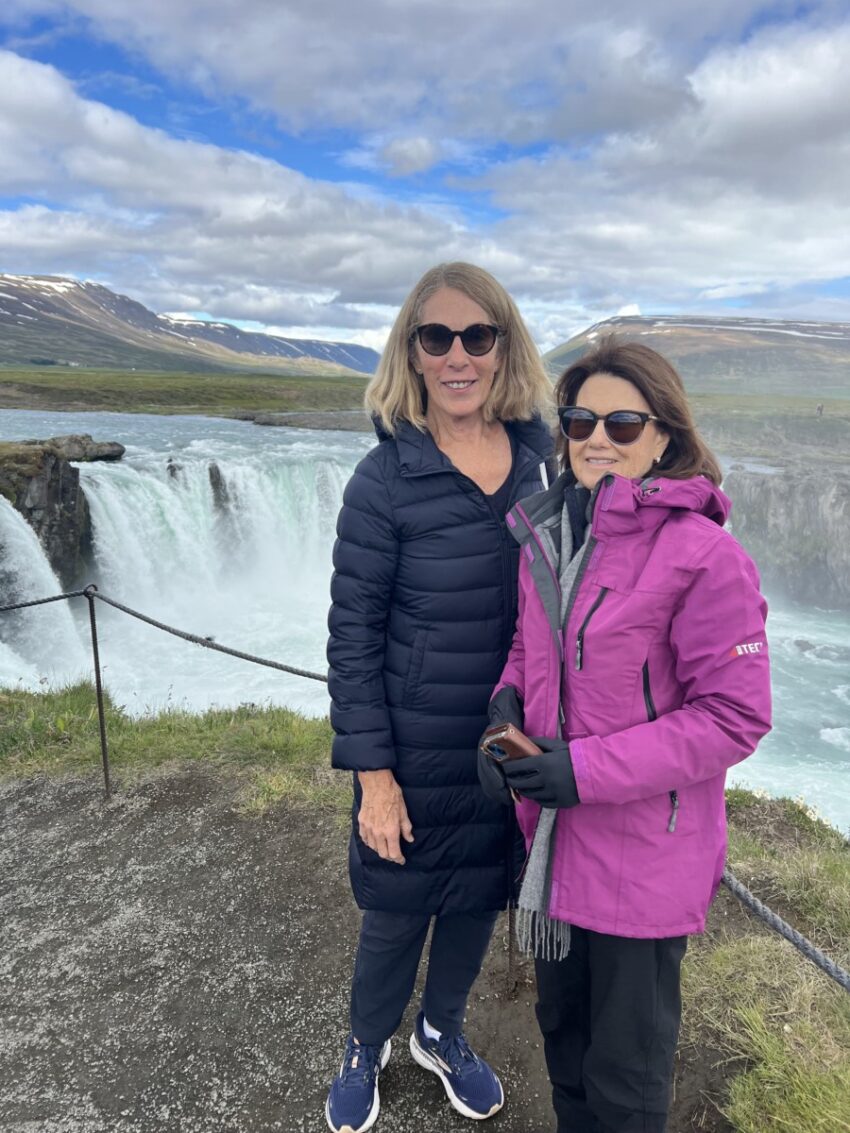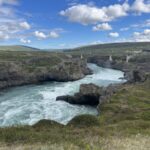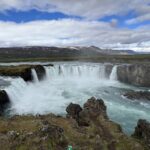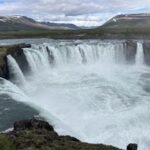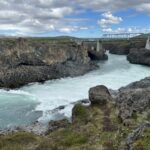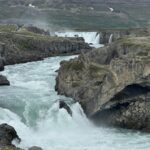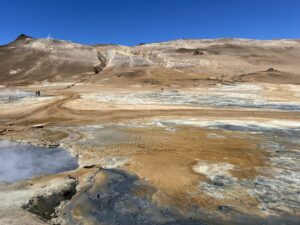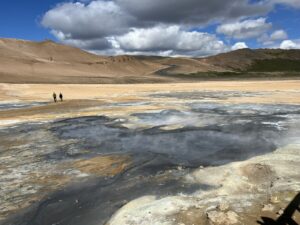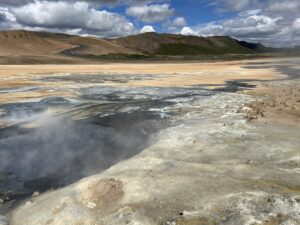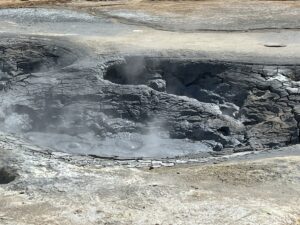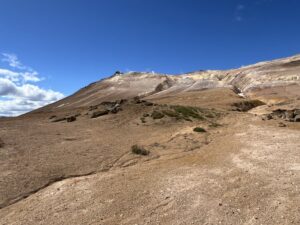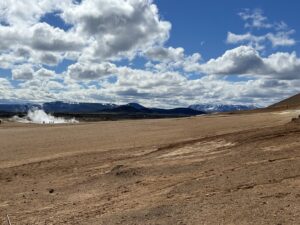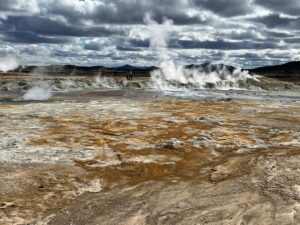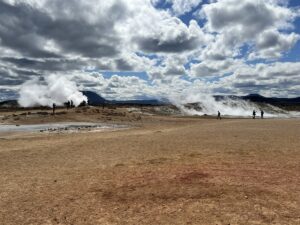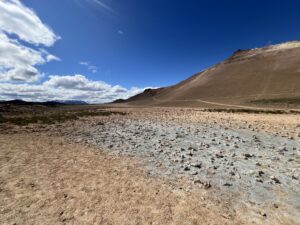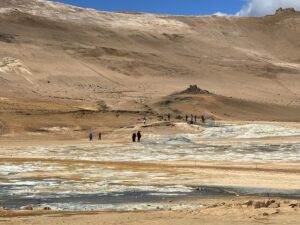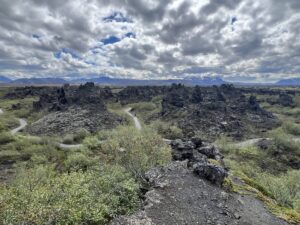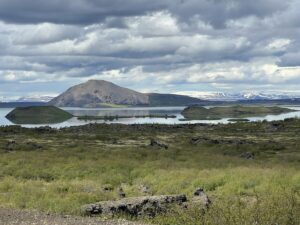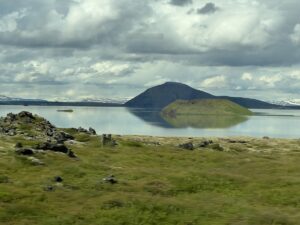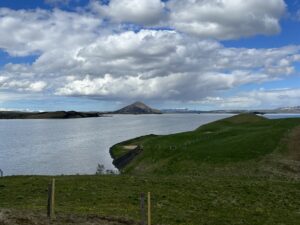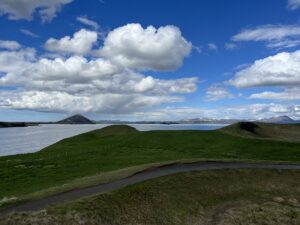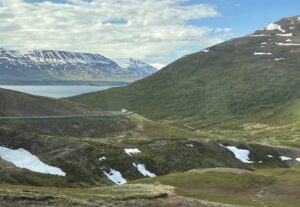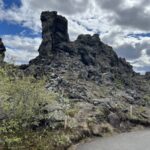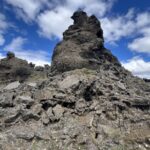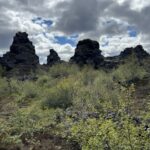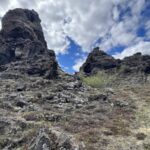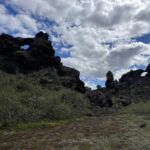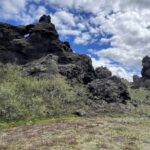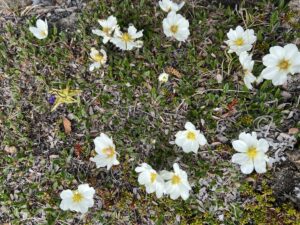Iceland is a small island nation that is Europe’s westernmost country and home to the world’s northernmost capital, Reykjavik. Eleven percent of the country is covered in glacial ice and is surrounded by water.
A volcanic island, Iceland experiences severe volcanic activity. In 2010, the Eyjafjallajokull volcano at an elevation of 5,466 feet (1,666 meters) erupted, blowing ash high into the atmosphere and disrupting European air traffic for weeks.
Iceland is located between the Greenland Sea and the North Atlantic Ocean. It is northwest of the United kingdom, and is slightly smaller than the state of Kentucky.
The land is plateau with mountain peaks, and ice fields, with a coastline marked by fjords, which are deep inlets carved by glaciers.
Icelanders take care to preserve their traditions and language. Some Icelanders still believe in elves, trolls, and other mythical characters that date back to their Celtic and Norse beginnings. Most Icelanders live in the southwest part of the country.
Our first port of call in Iceland is Akureyri, which is often referred to as the ‘Capital of the North”. It is situated along the northern coast of iceland, surrounded by mountains and nestled at the head of Eyjafjorour fjord. The town’s name translates to ‘Meadow Peninsula’ in Icelandic, a reflection of the historical connection to agriculture and its lush surroundings.
Our tour took us along the shore of Eyjarfjordur fjord and then across an ancient glacial valley en route to Godafoss waterfall. Godafoss, the “Waterfall of the Gods,” is one of Iceland’s most iconic natural treasures, situated in the northeastern region of the country. Steeped in both beauty and history, it forms an integral part of Skjalfandafljot, the fourth-largest river in Iceland. Godafoss cascades over a curved edge, spanning approximately 100 feet (30 meters) in width and plummeting 39 feet (12 meters) down into a serene and picturesque pool.
Then on to Namaskard to see a totally different landscape of active geothermal pits and cauldrons. Námaskarð is notable due to its barrenness; no vegetation grows on its slopes. This is due to the heat beneath the earth, the acidity in the soil, and poisonous fumes being expelled. The air smells intensely of sulphur throughout the area, which, while unpleasant, is a constant reminder of the powerful forces at work beneath your feet. We had to be careful of the running water, as it is likely to be boiling. Also, we needed to give all the hot springs a reasonably wide berth, as the land surrounding them could have been unstable, with scalding steam just beneath the surface.
Then on to Skutustadir. When we entered the Myvatn area, we came across the Skútustaðagígar pseudo craters. They are often known as rootless cones or rootless craters as they have no end, as normal craters would usually do. The Skútustaðagígar pseudo craters are called pseudo craters as they are not caused by the actual explosion of volcanos, but are a byproduct of their flowing lava. This natural phenomenon takes place when piping hot lava flows over cool, wet grounds and pressurises the earth downwards. This causes steam to be trapped under the weight of the lava, producing extreme pressure. When this pressure becomes too great, steam explosions are triggered, creating depressions in the ground to form these mesmerising pseudo craters. The Skútustaðagígar pseudo craters were formed during the eruption of Lúdentaborgir and Þrengslaborgir around 2,300 years ago.
And our final stop is Dimmuborgir at Myvatn. Dimmuborgir consists of huge lava rock formations which make you feel like you stepped into another world – a world of fairy tales.
The formation of these extraordinary lava pillars stems from molten lava creating a lava pond in the eruption of Lúdentarborgir and Þrengslaborgir row of craters some 2,300 years ago. It is full of hardened lava lakes, natural arches and craggy grottoes.
Folk lore has it, that in one location hidden away is a cave where the Icelandic Yule lads live
In Iceland, there are 13 Yule lads, which are quite different from Santa Claus!! They aren’t as bad as their parents, but they are quite ill-mannered and who wouldn’t be after having been raised by the two terrible trolls, Gayla and Leppaludi!!!
A very informative day with a big insight in to the Icelandic culture.

